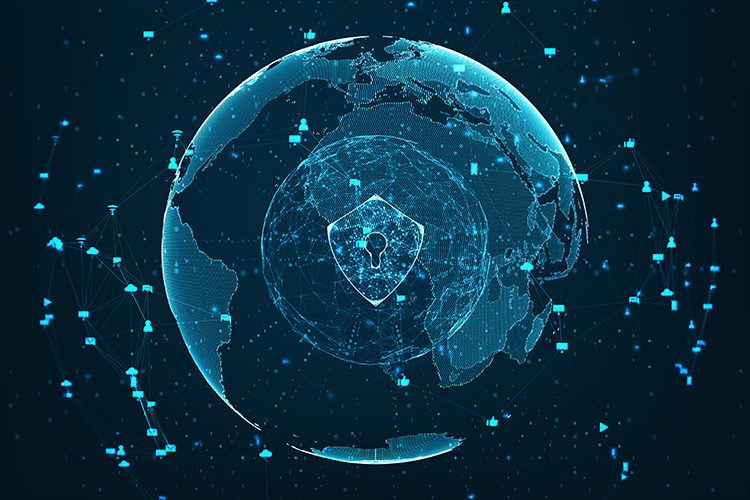High-tech companies are among the juiciest targets for ransomware attackers. Organizations working in artificial intelligence, semiconductor manufacturing, and cloud computing store vast amounts of intellectual property and sensitive data, meaning one attack can net a lot of profit.
Even the largest firms have fallen victim. In 2022, NVIDIA suffered a ransomware attack from hacker group Lapsus$ that exposed over a terabyte of sensitive data, including employee credentials and proprietary source code. Then in 2023, Taiwan Semiconductor Manufacturing Company (TSMC) was targeted via one of its hardware suppliers by the LockBit ransomware gang, who demanded $70 million for stolen data.
These incidents highlight a troubling reality: ransomware operators are no longer targeting just financial or healthcare institutions—they are going after the companies driving innovation, for whom proprietary data is the most valuable and downtime is the most disruptive. As attackers develop more sophisticated techniques, traditional security defenses struggle to keep pace.
Ransomware’s Impact on High-Tech Companies
The financial consequences of ransomware extend beyond the ransom itself. The average ransomware payment in 2024 was $2.73 million, up nearly $1 million from 2023. But the downtime costs associated with a ransom demand are even more severe, with the average large enterprise losing about $23,750 per minute of unplanned IT downtime. These are global averages, but in industries where cloud infrastructure powers real-time applications and product innovation, unplanned IT outages can disrupt CI/CD pipelines, corrupt collaborative tools, and stall critical R&D work.
Beyond financial loss, ransomware attacks in high-tech environments jeopardize proprietary assets—AI models, semiconductor designs, and cloud-based services. Intellectual property theft can derail competitive roadmaps, while service outages damage customer trust and brand reputation.
Regulatory scrutiny is also intensifying. With frameworks like the EU AI Act and ISO/IEC 27001 mandating stricter protections around machine learning models and cloud infrastructure, high-tech firms face higher compliance risks if ransomware compromises sensitive data.
Given these challenges, relying on traditional, reactive security measures is no longer enough. High-tech companies must adopt proactive ransomware prevention that safeguards both uptime and innovation.
Traditional Security Fails to Stop Ransomware
Most organizations still depend on outdated security tools designed to detect known threats. However, ransomware groups constantly modify their malware to evade detection, rendering signature-based antivirus solutions ineffective. Even endpoint protection tools often identify ransomware too late—once encryption has already begun. A Splunk deep dive on ransomware encryption speed found that the fastest ransomware can encrypt just shy of 110,000 files in under 5 minutes.
Backups, once considered a reliable defense, are now frequently targeted as well. Many ransomware variants, including LockBit and BlackCat, seek out and delete backups before initiating encryption. Once backups are compromised, companies are left with an impossible choice: pay the ransom or lose your data permanently.
Firewalls and network security tools do not adequately stymie modern ransomware attacks. Since many intrusions begin with phishing emails or stolen credentials, the ransomware enters the system through legitimate channels and spreads laterally. Traditional perimeter-based defenses do little to prevent this type of infiltration. Even when they do exploit a technical vulnerability, perimeter defenses typically use signature-based identifiers. This means that if a vulnerability has not been reported and patched, these tools will view the exploit attempt as legitimate traffic.
Additionally, many companies assume that cybersecurity insurance will mitigate financial losses, but insurance providers have become increasingly hesitant to cover ransomware-related damages due to the surge in claims. Some policies now require proof of proactive security measures before issuing payouts, making it even more essential to invest in real-time ransomware prevention.
Prevent Ransomware Attacks Before They Begin
Waratek provides a fundamentally different approach to ransomware protection, focusing on behavior-based security policies rather than relying on outdated malware signatures. This approach blocks ransomware within the runtime environment before encryption ever begins.
One of Waratek’s key capabilities is real-time file monitoring, which detects abnormal file modifications that indicate an impending ransomware attack. Ransomware typically follows a predictable pattern—scanning files, encrypting them, and then issuing a ransom demand. Waratek intercepts this process before encryption starts, blocking unauthorized modifications to critical files, backup systems, or restricted directories.
Waratek also enforces behavior-based security policies that prevent unauthorized file encryption attempts, even from unknown ransomware variants. Unlike traditional security tools that require updates to recognize new malware, Waratek applies strict rules that allow only authorized processes to modify or encrypt files. This means that even a zero-day ransomware attack—one that has never been seen before—would be stopped because its behavior is automatically blocked.
The platform also allows organizations to customize immutable security policies in real time. This is particularly valuable for high-tech companies, where intellectual property, cloud environments, and research data require tailored protections. If a new ransomware trend emerges, companies can quickly deploy new policies without waiting for external security updates.
All these features are designed with low-performance impact in mind, ensuring that these security measures do not slow down development or production environments. Many security solutions introduce latency or operational overhead, making them impractical for high-performance computing environments. Waratek’s lightweight approach ensures that security remains a priority without disrupting critical workflows.
Get Started Today
The rapid evolution of ransomware means that traditional security methods are no longer sufficient. Waratek offers a proactive defense that stops ransomware before encryption can occur, eliminating the need for reliance on signature-based detection and providing real-time monitoring that adapts to new threats.
By preventing unauthorized file modifications, securing critical assets, and enabling adaptable security policies, Waratek provides a comprehensive defense against ransomware. The consequences of an attack—financial losses, operational downtime, and reputational damage—are too severe for high-tech companies to ignore.
As ransomware threats continue to grow, organizations must act now to protect their intellectual property, research, and business operations. Implementing Waratek’s proactive approach ensures that ransomware attacks are stopped before they can cause harm.




